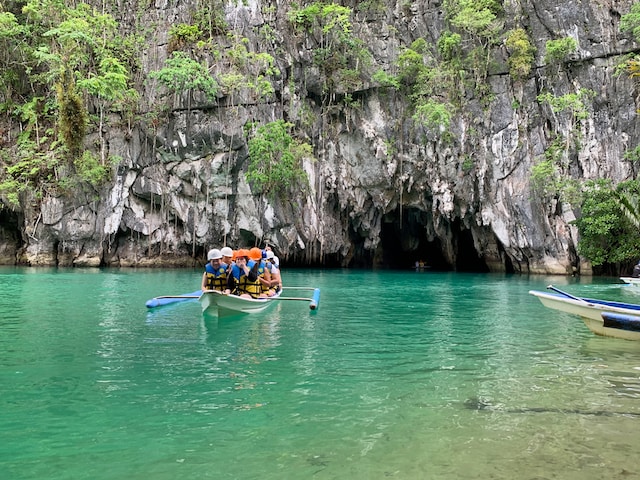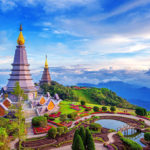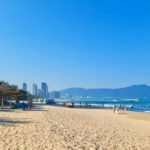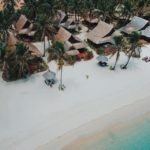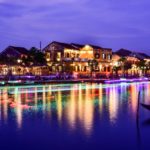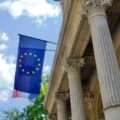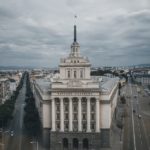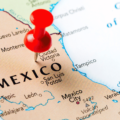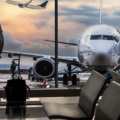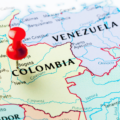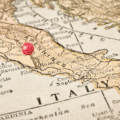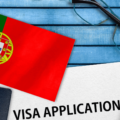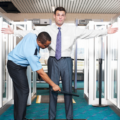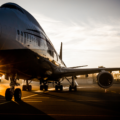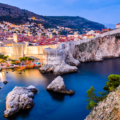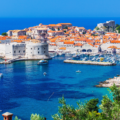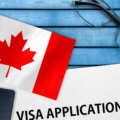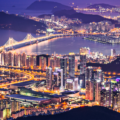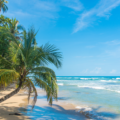Thinking about your next digital nomad adventure to Puerto Princesa?
I remember that feeling. Palawan is one of those places that just calls to you, and its main city, Puerto Princesa, is a fantastic home base for remote workers. I first visited a few years back, and I’ve just returned in 2025 to find it’s even better than I remembered.
I’m Jeff, a full-time digital nomad, and on my blog, I go by “Jeff the chilled nomad.” My goal is to give you the real story on these destinations.
So, I’m going to walk you through everything I’ve learned about living costs, the best places to work, and what it’s really like to live here. Let’s get into it.
Key Takeaways
- Puerto Princesa is an affordable and beautiful home base for digital nomads in Palawan, with monthly rentals and living costs that are much lower than in major hubs like Manila.
- The city has decent internet, with free public WiFi in some areas and reliable fiber connections available, but you need to be prepared for occasional power outages.
- You won’t find a huge coworking scene, but there’s a great selection of cafes like Itoy’s Coffeehaus and Eightynine Cafe that welcome remote workers with good coffee and air conditioning.
- From my experience, the community is incredibly welcoming, and the mix of city convenience with easy access to stunning nature makes Puerto Princesa a top-tier choice for a balanced digital nomad lifestyle in 2025.
Overview of Puerto Princesa, Palawan for Digital Nomads
Puerto Princesa is a fantastic option for digital nomads because it balances affordability with that incredible tropical beauty the Philippines is famous for.
The country has really become a hotspot for remote workers. You get stunning islands, super friendly locals, and a cost of living that makes your money go a lot further. Palawan itself is often called one of the best islands in the world, and I can see why. The turquoise water and limestone cliffs are just as amazing as the pictures.
Puerto Princesa, as the capital of Palawan, gives you the best of both worlds. You have modern conveniences without the chaos of a megacity like Manila. While Manila is a fun, bustling city with tons of coworking spaces, I’ve always found Palawan offers a much better work-life balance.
Connectivity here is surprisingly good, especially in the city proper. But a pro tip I always share is to have a backup plan. A portable power bank is a must, as occasional power outages, known locally as “brownouts,” can happen. A 2024 report from We Are Social noted that internet penetration in the Philippines has reached 73.1%, and you can feel that growth here.
Most of us arrive on a tourist visa, which is pretty straightforward. You typically get a 30-day stay upon arrival, which can be extended. I’ll get into the specifics of that a bit later.
One of the best things is the low cost of living. Eating at local spots, called “carinderias,” and using tricycles or the ride-sharing app Grab will keep your daily expenses incredibly low. It means you can spend more on weekend trips to places like El Nido or the surfing hub of Siargao.
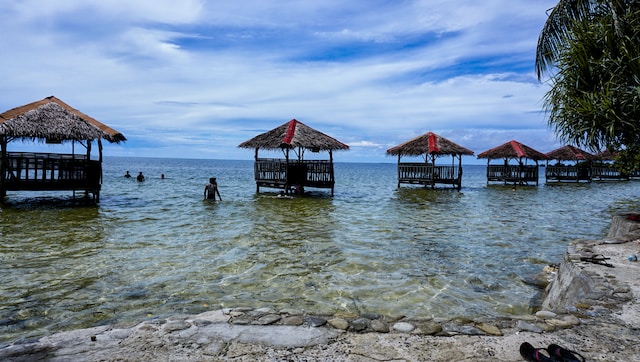
BM Beach, Barangay San Pedro, Puerto Princesa, Palawan, Philippines
Living in Puerto Princesa
Life in Puerto Princesa has a rhythm that’s perfect for a digital nomad. It’s a city that blends work and relaxation seamlessly.
The city has a reputation for being safe, and the locals are genuinely warm and welcoming to foreigners. This creates an inviting atmosphere where you feel comfortable settling in. The free public WiFi is a nice touch, but for serious work, you’ll want a dedicated connection at your apartment or a favorite cafe.
Speaking of cafes, there are tons of them. While you won’t find a huge number of dedicated coworking spaces, the cafe culture here more than makes up for it. It’s easy to find a spot with good air conditioning and a decent connection to get a few hours of work done.
What I love most is working with serene natural beauty just a stone’s throw away. It reminds me of the early days in Chiang Mai, but with the added bonus of the ocean. Being able to finish a project and then head to a beach for sunset is a major perk.
Best Neighborhoods
Choosing the right neighborhood in Puerto Princesa is key to settling in nicely. Your best bet depends on the lifestyle you’re looking for.
Here are a few areas I’d recommend checking out:
- City Proper: If you want to be in the center of the action, this is the place. It’s bustling with local life, and you’ll have countless restaurants, shops, and cafes within walking distance. It can be a bit noisy, but the convenience is hard to beat.
- San Pedro: This area is just east of the airport and offers a more residential, local feel. It’s quieter than the city center but still very accessible. I’ve found some great long-term rentals here, and it’s close to Robinsons Place Mall.
- Bancao-Bancao: Located south of the airport, this is another great residential area. It offers a good mix of local living with easy access to the main road, making it simple to get around the city.
The original article mentioned places like El Nido, Coron, and Siargao. It’s important to know these are other popular destinations in the Philippines, some of which are a multi-hour van or ferry ride away. They are not neighborhoods within Puerto Princesa itself, but they make for amazing weekend trips.
Cost of living in Palawan
One of the biggest draws for me is how affordable living in Puerto Princesa is. Your money really goes a long way here, especially if you live like a local. Here’s a breakdown of what I typically spend in a month in 2025.
| Expense Category | Estimated Cost (USD) |
|---|---|
| Rent (One-bedroom apartment in city centre) | $250 – $400 |
| Groceries | $150 – $250 |
| Dining Out (Mix of local and mid-range) | $150 – $250 |
| Transportation (Tricycles, scooter rental) | $50 – $100 |
| Utilities (Including internet) | $50 – $80 |
| Leisure Activities and Entertainment | $100 – $200 |
| Fitness/Health Club | $20 – $40 |
| Total Estimated Monthly Cost | $770 – $1,320 |
Of course, these costs can change based on your lifestyle. A meal at a local carinderia might only cost $2-$3, while a dinner at a tourist spot like KaLui Restaurant will be more. A San Miguel beer is usually around 70 PHP ($1.20). Being mindful of your spending makes it easy to live comfortably here.
Internet Speeds
For any digital nomad, the internet question is a big one. I’m happy to report that the connection in Puerto Princesa is solid, especially compared to a few years ago.
The Department of Information and Communications Technology (DICT) has been rolling out free Wi-Fi spots across the country, which is helpful in a pinch. However, for consistent work, you’ll want a reliable provider.
| Internet Provider | Common Download Speed (Mbps) | Common Upload Speed (Mbps) | My Take |
|---|---|---|---|
| PLDT | 50-200+ | 20-100+ | This is the top choice. If you can get PLDT Fiber in your apartment, do it. It’s generally the most stable. |
| Globe Telecom | 20-100 | 10-50 | A good alternative to PLDT. Their mobile data is also very strong, making it a great backup. |
| Converge ICT | 50-200+ | 50-100+ | A newer player that offers fast fiber speeds, but their coverage in Palawan is still expanding. Check if it’s available in your area. |
A crucial tip: Power outages, or “brownouts,” can happen. They are usually short, but having a laptop with a good battery and a portable power bank for your phone and hotspot is a non-negotiable part of my kit here.
Overall, the Puerto Princesa’s digital scene is growing fast. The combination of improving internet and incredible surroundings makes it a very attractive spot.
Working in Puerto Princesa – The nomad community
The nomad community here is growing but still has a relaxed, low-key vibe. It’s easy to connect with people, and the city’s infrastructure supports a remote work lifestyle well.
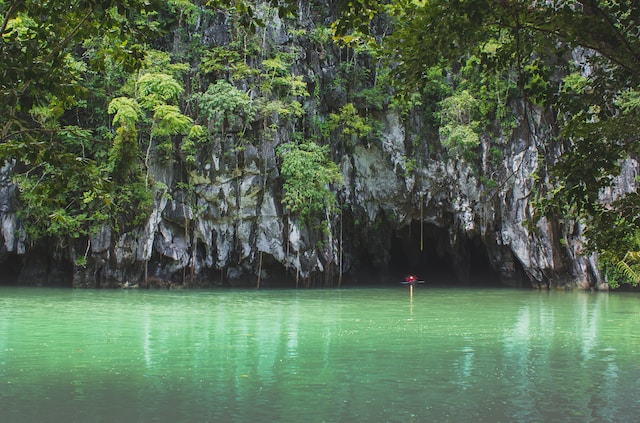
Puerto Princesa Subterranean River National Park, Puerto Princesa, Palawan, Philippines
Best Places to Work
You’ll have no trouble finding a great spot to open your laptop in Puerto Princesa. The options have really improved over the years.
Here are my go-to places:
- Coffee Shops: This is where I spend most of my workdays. Places like Itoy’s Coffeehaus, Eightynine Cafe, and The Coffee Bean & Tea Leaf at Robinsons Mall are nomad favorites. They all offer decent Wi-Fi, air conditioning, and good coffee.
- Hotels with Lobbies: Many hotels have comfortable lobbies or cafes that are perfect for a few hours of work. I’ve found that as long as you buy a coffee or a drink, the staff are usually very welcoming.
- Your Own Apartment: Getting a solid internet plan from PLDT or Globe at your rental is the most reliable option for heavy workloads and video calls. This is what I do for the bulk of my freelance copywriting work.
- Beachfront Cafes: For lighter tasks, nothing beats working with a view. Some resorts along the coast have cafes where you can work while enjoying the sea breeze. The connection might not be as fast, but the atmosphere is unbeatable.
Coworking Spaces
Puerto Princesa’s coworking scene is still developing, which is something to be aware of. It’s not like Bali or Medellin with dozens of options.
Here’s the current situation as of my 2025 trip:
- HubCity Palawan: For a long time, this was the main dedicated coworking space in the city. It offers the standard amenities like high-speed internet, desks, and a professional environment.
- Cafe Culture as an Alternative: Honestly, the strong cafe culture fills the gap well. Most nomads I’ve met here prefer to hop between different cafes rather than committing to a single coworking space.
- Community Building: You can find a growing community of remote workers here. There are Facebook groups for expats and digital nomads in Palawan where people organize meetups and share tips.
The availability of flexible options on sites like Coworker.com shows that the demand is growing. I expect to see more dedicated spaces pop up in the coming years.
Jobs for Digital Nomads
Puerto Princesa is a fantastic base for remote work, not necessarily a place to find local jobs. The city’s low cost of living and reliable internet make it an ideal spot to grow your existing remote career or freelance business.
The lifestyle here is perfect for roles that require focus and creativity, like writing, programming, digital marketing, or graphic design. With the money you save on living expenses, you can invest more back into your business or simply enjoy a better work-life balance.
The key is to have your income source secured before you arrive. This allows you to fully take advantage of everything the beautiful island of Palawan has to offer without the stress of a job hunt.
Accommodation in Puerto Princesa – best places to live
Finding a great place to live in Puerto Princesa is refreshingly easy and affordable. There are plenty of options whether you’re staying for a month or a year.
Finding an Apartment
Finding an apartment here is pretty straightforward. I’ve found that a mix of online and on-the-ground searching works best.
Many digital nomads start with a short-term rental on a platform like Airbnb. This gives you a comfortable place to land while you explore different neighborhoods and look for a longer-term deal. It’s a flexible way to get a feel for the city.
For longer stays, I highly recommend checking out Facebook Marketplace and local Facebook groups for expats in Palawan. This is where you’ll find the best deals on monthly rentals posted directly by landlords. You can often find a one-bedroom apartment for a fraction of the cost of a short-term let.
My best advice is to book a place for your first week online, and then spend some time driving around your preferred neighborhoods. You’ll often see “For Rent” signs on gates, and talking to locals can lead you to hidden gems that are never advertised online.
Cheap Places to Stay
If you’re on a tight budget, Puerto Princesa has you covered. There are plenty of wallet-friendly options that are clean, safe, and comfortable.
- Guesthouses: This is a popular option. You’ll find many family-run guesthouses that offer simple, clean rooms at very reasonable prices. They’re a great way to meet locals and get tips on the area.
- Budget Hostels: For solo travelers, hostels are a fantastic way to save money and meet other nomads. Many offer both dorm beds and private rooms.
- Homestays: For a truly local experience, a homestay can be an amazing choice. You’ll live with a Filipino family, share meals, and get an authentic look at the culture.
- Airbnb Rooms: Instead of renting a whole apartment, you can often find private rooms for rent on Airbnb. This gives you your own space while keeping costs down.
- Budget Hotels: There are also numerous budget-friendly hotels that provide basic amenities like Wi-Fi and air conditioning without the high price tag of a resort.
Transportation in Puerto Princesa
Getting around Puerto Princesa is part of the adventure. The city is a major transportation hub for Palawan, so it’s well-connected and easy to navigate.
The main airport, Puerto Princesa International Airport (PPS), has flights connecting to Manila, Cebu, and other key cities. From the airport, it’s a short ride into the city proper.
Here are the common ways to get around:
- Tricycles: These are the most common form of public transport. They are essentially a motorcycle with a sidecar. Always agree on the fare before you get in. A short trip within the city should only cost around 50-100 PHP.
- Jeepneys: For longer routes, these colorful, iconic Filipino buses are a cheap and fun way to travel. They have fixed routes and are incredibly affordable.
- Scooter Rental: This is my personal favorite. Renting a scooter gives you complete freedom to explore at your own pace. Daily rentals cost around 300-500 PHP, and you can get a better deal for monthly rentals. It’s perfect for finding hidden beaches like Nagtabon.
- Grab: The ride-sharing app Grab is available here and can be used to book tricycles and private cars, which is great for avoiding fare negotiations.
The city’s layout is quite simple, and its connections to places like El Nido make it an excellent base for exploring the rest of Palawan.
Health and Fitness in Puerto Princesa
Staying healthy and active in Puerto Princesa is easy. The city has good medical facilities and plenty of options to keep you fit.
Medical Care and Insurance
The medical care available in Puerto Princesa is reliable. The city has several hospitals that are equipped to handle most medical needs, which provides great peace of mind.
You can find quality care at facilities like Palawan Adventist Hospital and MMG-PPC Cooperative Hospital. For routine check-ups or minor issues, there are also numerous smaller clinics. While healthcare is affordable compared to Western standards, it’s crucial to have comprehensive travel insurance.
I personally use SafetyWing, which is designed for nomads and covers both medical emergencies and travel-related issues. Having good insurance means you can relax and enjoy your time without worrying about unexpected medical bills.
The city also promotes a healthy lifestyle, with a focus on wellness. You’ll find plenty of opportunities to stay active, which contributes to both physical and mental well-being while working remotely.
Fitness Facilities
Palawan has some excellent gyms and fitness centers, so you won’t have to skip your workout routine. Here are a few solid options in Puerto Princesa:
- Fitness Camp: This is a popular and well-equipped gym that’s a favorite among locals and expats. It has a good range of free weights, machines, and cardio equipment.
- Anytime Fitness: Located at Robinsons Place Palawan, this international chain offers 24/7 access, modern equipment, and clean facilities. It’s a great option if you have an existing membership or prefer a global brand standard.
- Hotel Gyms: Many of the larger hotels have their own fitness centers. Sometimes you can pay for a day pass or a monthly membership even if you aren’t a guest.
- Health Services: Beyond gyms, you can easily find places for sports massages or yoga classes to complement your fitness routine and help you recover after a long hike or a day of surfing.
Exploring Puerto Princesa
The best part of living in Puerto Princesa is the incredible nature and adventure right at your doorstep. There’s always something new to discover.
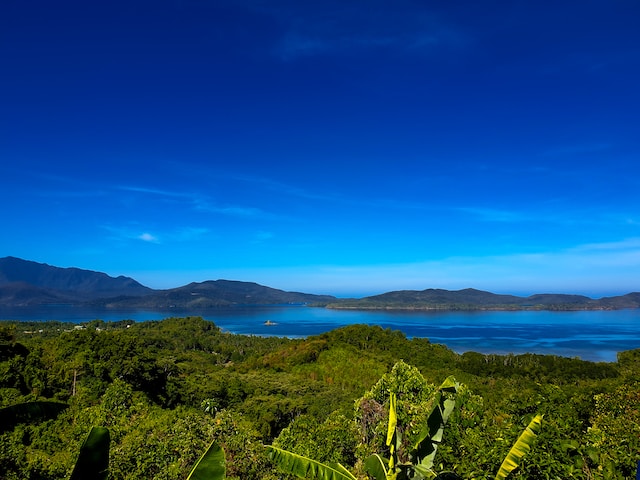
View Deck, Puerto Princesa, Philippines
Things to Do
- Explore the Underground River: You simply can’t miss this. The Puerto Princesa Subterranean River National Park is a UNESCO World Heritage Site for a reason. The boat tour through the cave system is truly unforgettable.
- Island Hopping in Honda Bay: Spend a day exploring the beautiful islands of Honda Bay. Tours usually take you to spots like Cowrie Island, Starfish Island, and Luli Island for amazing snorkeling and beach relaxation.
- Visit the Crocodile Farm: Officially the Palawan Wildlife Rescue and Conservation Center, this place is more than just crocodiles. It’s a fascinating look at local wildlife conservation efforts.
- Go Firefly Watching: Taking a quiet evening boat tour on the Iwahig River to see the mangroves lit up by thousands of fireflies is a magical experience.
- Hike Ugong Rock: For a bit of adventure, head to Ugong Rock. You can climb through the limestone formation and then take an exhilarating zipline back down.
- Relax at Nagtabon Beach: This is my favorite nearby beach. It’s a beautiful, less-crowded stretch of sand that’s perfect for swimming and relaxing, just a 45-minute scooter ride from the city.
- Walk the City Baywalk: In the evening, the Baywalk comes alive. It’s a great place to stroll, watch the sunset, and try some local street food.
- Eat at KaLui Restaurant: This is a Puerto Princesa institution. It’s a beautiful restaurant with amazing, fresh Filipino seafood. You have to take your shoes off before you enter, which adds to the unique vibe.
Nightlife and Entertainment
After a productive day, Puerto Princesa offers a fun and relaxed nightlife scene. It’s not a wild party city, but there are plenty of great spots to unwind.
Here’s what you can expect:
- Live Music Bars: You can find several bars with live bands playing a mix of local and international music. It’s a great way to enjoy a cold San Miguel and soak in the local atmosphere.
- Kinabuchs Grill & Bar: This is one of the most popular spots in the city. It has a huge outdoor seating area, a diverse menu, and a lively, friendly vibe.
- Tiki Resto Bar: A classic spot known for its thatched roofs, potent cocktails, and energetic crowd. It’s a fun place to go for drinks and dancing later in the evening.
- Palaweño Brewery: If you’re into craft beer, you have to check out the Palaweño Brewery. They brew the first and only craft beer on the island and have a cool, laid-back tasting room.
- Beach Bars: Some beachside spots offer a more chilled-out experience, perfect for watching the sunset with a drink in hand.
The nightlife here is more about socializing and enjoying good company than all-night clubbing, which I find fits the digital nomad lifestyle perfectly.
Outdoor Activities
Puerto Princesa is an outdoor lover’s paradise. The natural beauty of Palawan is accessible right from the city, offering endless adventures.
- Scooter Adventures: Renting a motorbike is the best way to explore. I love taking my scooter out to discover hidden waterfalls and secluded beaches that aren’t on the main tourist trail.
- Island Hopping: A trip to Honda Bay is a must. You can easily book a tour that will take you to several stunning islands for a full day of swimming, snorkeling, and sunbathing.
- Snorkeling and Diving: The waters around Palawan are teeming with marine life. There are great snorkeling spots in Honda Bay, and for serious divers, the world-famous Tubbataha Reefs Natural Park is accessible from Puerto Princesa via liveaboard boats.
- Surfing: While not as famous as Siargao, you can catch some waves at certain spots. Nagtabon Beach can have good surfing conditions, especially during the right season.
- Jungle Trekking: The lush forests surrounding the city are perfect for hiking. You can hire a guide to take you on a trek to discover hidden waterfalls and learn about the local flora and fauna.
- Helmet Diving: For a unique underwater experience, you can try helmet diving in Honda Bay. It allows you to walk on the ocean floor and get up close with colorful fish without needing any diving certification.
Best Time to Visit Puerto Princesa
The best time to visit Puerto Princesa is during the dry season, which typically runs from December to May. During these months, you’ll have plenty of sunshine and minimal rain, making it perfect for beach days and island hopping.
March to May are the hottest months, but they are also ideal for enjoying all the water activities Palawan has to offer. The peak tourist season is around Christmas, New Year, and Easter, so I recommend booking things in advance if you plan to visit then.
The rainy season is from June to November. While you can get cheaper deals during this time, be prepared for typhoons, which can cause travel disruptions between July and October.
From my experience, visiting in December or early January is a sweet spot. The weather is fantastic, and you arrive just before the main crowds.
Tips for Digital Nomads in Puerto Princesa
A few practical tips can make your transition to life in Puerto Princesa much smoother. Here are some things I’ve learned over my time here.
Safety and Security
I’ve always felt very safe in Puerto Princesa. The city has a low crime rate, and the locals are incredibly helpful. However, like anywhere in the world, it’s smart to take basic precautions.
Keep your valuable belongings secure, especially in crowded places like markets. Don’t flash expensive electronics or large amounts of cash. I always recommend using reputable transportation, like Grab or a tricycle driver you trust, especially when traveling alone at night.
When it comes to health, be mindful of what you eat and drink. Stick to bottled water, and be cautious with street food until your stomach has adjusted. Having good travel insurance is also a must for peace of mind.
Local Culture and Customs
The local culture in Palawan is a beautiful mix of warmth and respect. People are friendly and hospitable, and a little effort to understand their customs goes a long way.
A simple, friendly “Salamat” (Thank you) will always be appreciated. Respect for elders is a cornerstone of Filipino culture, so be mindful of that in your interactions. When you enter someone’s home, it’s customary to remove your shoes.
The culture is also deeply connected to faith, with Roman Catholicism being the main religion. You’ll see beautiful churches and may notice local celebrations tied to religious holidays.
To really connect with the culture, I recommend visiting a local market, trying traditional Palaweño dishes, and maybe attending a local festival if you get the chance. The Baragatan sa Palawan festival is an annual provincial celebration that’s an amazing showcase of local music, dance, and food.
Visa Requirements
Let’s talk about the visa situation, as it’s a key detail for any digital nomad. As of my 2025 visit, the Philippines does not yet have an official digital nomad visa, but the tourist visa process is very manageable.
Here’s how it generally works:
- Initial Entry: Depending on your passport, you’ll likely get a 30-day visa-free entry upon arrival. Make sure your passport is valid for at least six months beyond your planned stay.
- First Extension: Before your initial 30 days are up, you can go to the Bureau of Immigration office in Puerto Princesa and apply for a 29-day extension. This gives you a total of 59 days.
- Further Extensions: After that, you can continue to apply for extensions of 1, 2, or 6 months. It’s possible to stay in the country for up to 36 months as a tourist by renewing your visa.
The process is fairly routine. You’ll need to fill out some forms, provide passport photos, and pay the fees. It’s always a good idea to check the latest rules with the Philippine embassy in your home country before you travel.
Conclusion
So, is Puerto Princesa a great spot for your next digital nomad adventure? Absolutely.
In my opinion, it’s one of the best-kept secrets in Southeast Asia. You get the stunning natural beauty of Palawan, a low cost of living, friendly people, and a reliable enough infrastructure to get your work done.
It offers a perfect balance between a laid-back island lifestyle and the conveniences of a city. I hope my experience helps you plan your own amazing chapter in Puerto Princesa.
FAQs
1. What is Puerto Princesa known for as a digital nomad destination?
Puerto Princesa is famous for its incredible natural wonders, like the Underground River. For digital nomads, it offers a relaxed lifestyle, a very affordable cost of living, welcoming locals, and improving internet connectivity, making it a great tropical work base.
2. What are some popular coworking spaces in Puerto Princesa?
The dedicated coworking scene is small, with HubCity Palawan being a known option. However, most digital nomads here work from the many excellent cafes, such as Itoy’s Coffeehaus or Eightynine Cafe, which offer good Wi-Fi and air conditioning.
3. Is it easy to find accommodation suitable for digital nomads in Puerto Princesa?
Yes, it’s quite easy. You can find everything from budget-friendly guesthouses and hostels to modern apartments. I recommend using Airbnb for your first week and then checking Facebook Marketplace for better deals on monthly rentals once you’re on the ground.
4. What outdoor activities can I enjoy during my stay in Puerto Princesa?
There are so many! You can go island-hopping in Honda Bay, snorkel or dive, hike to waterfalls, or just relax on beautiful beaches like Nagtabon. A must-do is the tour of the Underground River, and for a bit of adventure, try the zipline at Ugong Rock.
Is the Philippines safe?
From my experience traveling extensively here, yes, the Philippines is generally safe for travelers. Like any country, some areas are best avoided, but popular tourist and digital nomad destinations like Puerto Princesa, Cebu, and Siargao are very safe.
The most common issues are petty theft in crowded areas. Just use common sense: be aware of your surroundings, don’t leave your belongings unattended, and avoid displaying expensive items. The people are overwhelmingly friendly and helpful, and I’ve never had a serious issue.
How to get Palawan
Getting to Palawan is simple. The main gateway is Puerto Princesa International Airport (PPS), which has regular flights from Manila and Cebu. This is the airport you’ll fly into for visiting Puerto Princesa.
If you’re heading directly to the northern part of the island, you can also fly into El Nido Airport (ENI) or Busuanga Airport (USU) for Coron, but these flights are usually more expensive and less frequent.
From outside the Philippines, you’ll almost certainly connect through Manila’s Ninoy Aquino International Airport (MNL).
Where is Palawan island located
Palawan is a long, narrow island in the western part of the Philippines. It’s situated between the South China Sea to the northwest and the Sulu Sea to the southeast. It’s part of the MIMAROPA region and is famous for its incredible biodiversity, clear waters, and dramatic limestone landscapes.
What to do in Puerto Princesa
When you’re in Puerto Princesa, you have a fantastic mix of nature, adventure, and relaxation at your fingertips.
1. Underground River Tour: This is the number one attraction. It’s a UNESCO World Heritage site and an amazing experience.
2. Honda Bay Island Hopping: Spend a day snorkeling and relaxing on the beautiful islands just off the coast.
3. Firefly Watching: A magical evening boat tour on the Iwahig River is something you won’t forget.
4. Explore by Scooter: Rent a motorbike and drive out to Nagtabon Beach or explore some of the local waterfalls.
5. Eat Like a Local: Try the fresh seafood at KaLui Restaurant or Kinabuchs Grill & Bar, and don’t miss the local “carinderias” for cheap, delicious meals.
6. Visit Baker’s Hill: A quirky, fun spot with beautiful gardens and a bakeshop famous for its hopia (a bean-filled pastry).
7. Relax and Unwind: Simply enjoy the slower pace of life. Find a favorite cafe, read a book by the beach, and soak in the tropical atmosphere.
What is a digital nomad?
A digital nomad is someone who uses technology to work remotely from anywhere in the world. Instead of being tied to a single office, we can earn a living while traveling and exploring new places.
Why is the Philippines a popular destination for digital nomads?
The Philippines is a top choice for a few key reasons. The cost of living is very low, the natural beauty of islands like Palawan is world-class, the locals are incredibly friendly and speak English, and the internet infrastructure is constantly improving.
Do I need a visa to stay in the Philippines as a digital nomad?
You can enter the Philippines on a tourist visa. Most nationalities get 30 days visa-free on arrival, which you can then extend at a local immigration office. It’s a common and straightforward process that allows for long-term stays.
Where are the best places to work remotely in the Philippines?
Besides Puerto Princesa, other great spots in the Philippines include Siargao for its surf and laid-back vibe, Cebu City for a more urban feel with island access, and El Nido or Coron for their stunning scenery, though the internet can be less reliable there.
What is the cost of living like for digital nomads in the Philippines?
The cost of living is one of the biggest attractions. You can live very comfortably on a budget that would be tight in many Western countries. Finding affordable apartments, cheap and delicious food, and low-cost transportation is easy.
Are there coworking spaces and cafes available for digital nomads in the Philippines?
Yes, absolutely. Major cities like Manila and Cebu City have many coworking spaces. In more relaxed spots like Puerto Princesa, you’ll find a thriving scene of laptop-friendly cafes that serve as informal workspaces for the nomad community.
What are some popular activities for digital nomads in the Philippines?
When you’re not working, the main draw is the outdoors. Activities like island hopping, diving, snorkeling, and surfing are incredibly popular. Exploring the beautiful beaches and enjoying the vibrant local nightlife are also must-do experiences.
